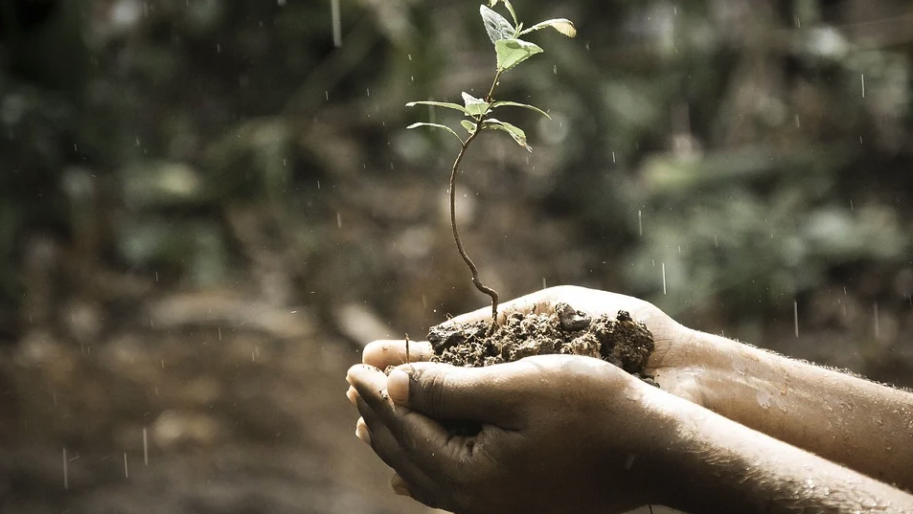By Ellie Cohen, The Climate Center, and Torri Estrada, Carbon Cycle Institute
This opinion piece was originally published on February 11, 2021 in CalMatters.
California is in the early stages of a severe multi-decadal drought, exacerbated by the climate crisis. As Dan Walters pointed out in his recent op ed, we must move quickly to prepare for water shortages and wildfires.
A potent strategy to improve the state’s water storage capacity involves an ancient technology so ubiquitous that it is often overlooked: soil. The urgency of California’s drought and wildfire risks require that we invest in soil health now. Demand action.
California is an agricultural powerhouse in large part due to its fertile soils. But historical agricultural practices have depleted their organic carbon content and diminished their water holding capacity. When soil’s carbon is restored through regenerative agriculture, it absorbs and retains more water, restores aquifers, draws down and stores more carbon from the atmosphere, sustains biodiversity, yields more and healthier crops, and increases farm profitability.
The ability of carbon-rich soils to store water and be more resilient to drought and extreme weather is well-documented. For every 1% increase in soil organic matter (a key indicator of soil health), an acre stores an estimated 20,000 gallons of additional water. In one experiment, covering the soil surface with a mulch of crop residue, a regenerative practice that protects soil and reduces evaporation, resulted in a 29% reduction in crop irrigation needs compared to uncovered soil. Another study found that covering soil increased its water retention by 74%.

In California, applying compost to soil has been shown to significantly increase water holding capacity and carbon sequestration on rangelands, and is a recommended practice by public resource management agencies. Combining compost application with cover crops boosts carbon sequestration on croplands.
Restoring soil health is a vital component of a climate agenda to ensure a livable climate for future generations. Nearly every climate modeling scenario that limits warming to 1.5 degrees Celsius includes carbon sequestration with soils. Globally, soils have lost about 135 billion tons of carbon. If this process were reversed – taking carbon out of the atmosphere and storing it in soil – about 14 years of our global carbon footprint would be negated. Worldwide, soil carbon sequestration could remove 110 parts per million of carbon dioxide from the atmosphere over 50 years, studies show.
Soil health makes good business sense. When soils’ natural functions are restored, they require less fertilizer, pesticide, and chemical inputs. As such inputs shrink, costs fall. At the same time, increased resilience of soil means that crop yields are less variable from year to year. All this is good for farmers’ bottom line.
Improving soil health can improve the resilience of rural farming communities, many of which dwell at the margins of economic viability. Case studies of two California almond farms, Okuye and Rogers, found that after adoption of soil health practices, their net income increased by $657 and $991 per acre, respectively, providing a vital boost to these farmers’ livelihoods.
Action is needed now to provide farmers, ranchers, and other land managers with the support they need. We call on California policymakers to:
- Rapidly and significantly increase funding for soil restoration by significantly increasing investments in current efforts such as the Healthy Soils Program and by developing new initiatives to meet the growing demand.
- Establish an ambitious and urgently needed target for nature-based sequestration on natural and working lands to 100 million metric tons of carbon dioxide equivalent or an amount of sequestration greater than emissions by 2030 annually in California.
Demand action from your policymakers today.
As the science and climate reality require, California must not only cut emissions further and faster but also start now drawing down emissions we have already dumped into the atmosphere using nature-based approaches, while also providing multiple additional benefits.
To reduce worsening droughts, wildfires, and other devastating climate impacts, it is time for state leaders to step up and take bold action. Improving the health of our soils is key to securing a climate-safe future for all.
Endorse Climate-Safe California today and support our work.


